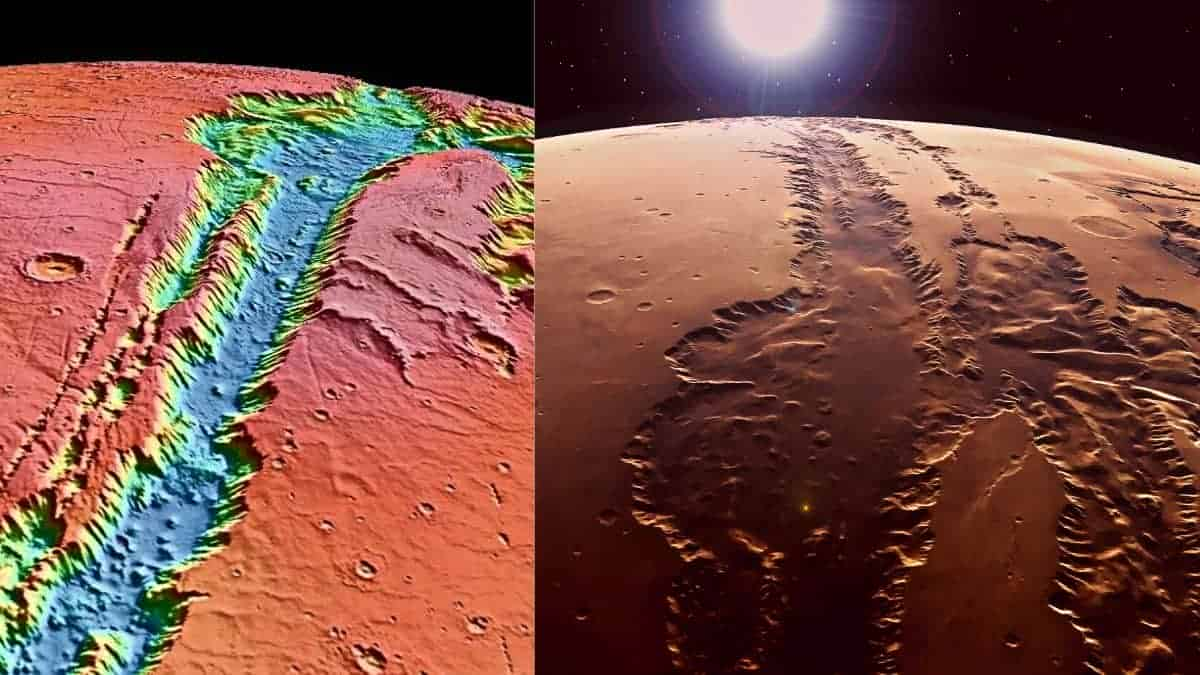Mars bears the largest canyon in the Solar System, the Valles Marineris

Valles Marineris stretched at 4000 km long, 200 km wide, and 7 km deep, is being called the Grand Canyon of the Solar System. Valles Marineris is a spectacular canyon discovered on Mars that is ten times longer than the Grand Canyon and is called the largest canyon system stretching from the northern tip of Norway to the southern tip of Sicily, a distance on Earth’s terms.
The biggest canyon system in the Solar System has been discovered by NASA’s Mars Express High-Resolution Stereo Camera on April 21, 2022. The canyon has formed as a result of the drifting of Mars’s tectonic plates. According to NASA, Valles Marineris is divided into two trenches called the Ius Chasma and Tithonium Chasma, developing from its western region.
Scientists say that the top of Tithonium Chasma has a patch of dark sand that might have developed from the Tharsis volcanic region. NASA’s images have shown that next to the dark sand region there are two light-toned mounds with a height of more than 10,000 feet. However, the surface of those mounds seems eroded by strong winds which indicates it is made of weak materials than the surrounding rock.
Interestingly scientists say that between the two mounds there are smaller bumps developed from water-bearing sulfate minerals. Debatably, the bumps resulted from the water liquid which once filled this region but later evaporated. Ius Chasma’s ridges consist of several triangle-shaped rocks which look a lot like a row of shark teeth indicating erosion.
Mars Express has been collecting images since 2003 and conducting a surface mapping of the planet in order to identify its minerals, composition, and circulation of its atmosphere much like NASA’s Landsat Program of Earth.


